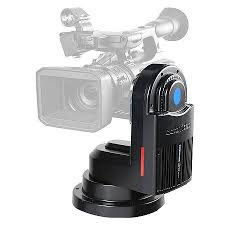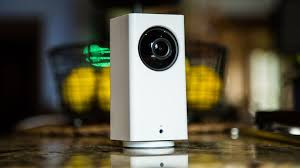1. Understanding the Fundamentals of Camera Panning
Camera panning is a fundamental technique in cinematography and photography that involves moving the camera horizontally along a fixed axis to follow or track a subject or scene. This motion allows the viewer to maintain visual continuity with the subject while also revealing the broader context, environment, or spatial relationships.
a. Definition and Purpose
The term “pan” originates from the word “panorama,” indicating its role in capturing a wide view or range of action. In practice, the camera operator pivots the camera body on a tripod head or gimbal, rotating it left or right to either keep pace with a moving object or show more of the surrounding area without changing the camera’s distance or angle.
b. Types of Camera Pans
- Linear Pan: A smooth, consistent horizontal movement following a straight path.
- Arc Pan: The camera moves in an arc rather than a straight line, adding curvature to the perspective.
- Dolly Pan: Combining a pan with a dolly movement, where the camera not only rotates but also moves forward or backward along a track.

c. Key Benefits
- Narrative Continuity: It helps maintain the flow of action by keeping subjects within the frame during movement.
- Spatial Orientation: Pans establish a sense of place, showing the relationship between characters and their environment.
- Temporal Progression: Panning can denote time passing, especially when combined with changes in lighting or other elements.
d. Technical Execution
A successful pan requires a steady hand or a specialized tripod head for fluid movement. Operators must consider factors like:
- Speed Control: Matching the pan speed to the action, maintaining a smooth and consistent rate.
- Framing and Composition: Ensuring each stage of the pan has balanced and meaningful framing.
- Timing: Anticipating the action to start and end the pan at the appropriate moments.
e. Integration into Storytelling
Pans are often used to:
- Transition Scenes: Smoothly connect one part of the story to another by moving from one point of interest to another.
- Track Characters: Maintain audience focus on a character as they move across a space.
- Show Scale and Scope: In landscape shots, pans can convey the vastness and detail of a location.
In essence, camera panning is a versatile tool that contributes significantly to the visual storytelling process, allowing creators to capture dynamic motion and contextual depth in their work.

2. The Mechanics of a Smooth Camera Pan
A successful pan requires precision and control. To achieve a smooth camera pan:
- Tripod or Gimbal: A stable base such as a tripod or gimbal ensures stability and controlled movement.
- Panning Head: Specialized tripod heads are designed for smooth pans, often with friction adjustments or fluid drag systems.
- Speed and Consistency: The operator must move the camera at an even pace, matching the speed of the subject or scene.
- Timing and Anticipation: Proper timing means starting the pan before the subject enters the frame and ending it after they exit, ensuring seamless coverage.
3. Choosing the Right Moment for Camera Pans
Deciding when to use a camera pan is an essential aspect of visual storytelling and cinematography, as it can significantly impact the narrative flow and audience engagement. Here are several factors to consider when choosing the right moment for a camera pan:
a. Tracking Movement
- Action: A pan is ideal when following continuous action, like a character walking or running across a scene. The pan should start as the subject moves into frame and continue until they exit or reach a significant point.
- Revealing: Use a pan to reveal important elements in the scene that are not immediately apparent. This could be a new character entering from off-screen, an object of importance, or an unexpected change in the environment.

b. Scene Transition
- Spatial Relationships: To establish spatial relationships between characters or objects within the same scene, a pan can show how these elements interact with each other or their surroundings.
- Scene Change: Panning can be used to transition from one part of a location to another, demonstrating a change in setting or mood without cutting away to a different shot.
c. Emphasizing Environment
- Wide Establishing Shot: When introducing a new location, a panoramic pan can convey the scale and context of the space, helping viewers understand where the action takes place.
- Detail Oriented: In detailed scenes, pans can slowly take in the nuances of the environment, adding depth and interest to the narrative.
d. Emotional Impact
- Reflecting Character State: If a character is experiencing a state of contemplation or introspection, a slow, thoughtful pan can mirror their emotional journey or mental process.
- Building Tension: During suspenseful moments, panning can create tension by showing potential threats or changes in the environment before the characters are aware of them.
e. Technical Considerations
- Sync with Dialogue or Sound: Pans can be timed to align with dialogue cues or music beats, enhancing the rhythm and pacing of the film.
- Camera Speed: The speed of the pan should match the pace of the story; fast pans for high-energy sequences, slower pans for more meditative moments.
In conclusion, the decision to pan should always serve the story, whether to enhance the viewer’s understanding, evoke emotion, or simply guide their attention. A well-timed and executed pan can add layers of meaning and visual richness to your footage.

4. Technical Aspects: Framing and Composition
In a pan shot:
- Starting and Ending Points: Careful selection of the beginning and end frames is crucial; each should be a strong composition in itself.
- Depth of Field: Using a shallow depth of field during a pan can create a unique focus shift effect, guiding the viewer’s attention.
- Aspect Ratio: Wider aspect ratios like CinemaScope can enhance the dramatic impact of pans by showing more of the scene’s width.
5. Cinematic Techniques Leveraging Camera Pans
Advanced cinematic applications include:
- Dolly Zoom: Combining a dolly out/in with a pan can create a disorienting vertigo effect (popularized by Alfred Hitchcock).
- Follow Shots: Panning is a key element in tracking shots, following characters as they move through environments.
- Time-Lapse Pans: Slower-than-real-time pans in time-lapse videos can depict changes over time in landscapes or cityscapes.
6. Challenges and Limitations
While effective, panning has its challenges:
- Motion Sickness: Excessive or jerky pans can cause discomfort for viewers.
- Subject Blurring: Fast-moving subjects may blur if the shutter speed isn’t set appropriately.
- Stabilization: Handheld panning can introduce unwanted shake, requiring post-production stabilization or specialized gear.

7. Creative Applications and Experimental Approaches
Innovative uses of panning can redefine storytelling:
- Panoramic Stitching: Multiple sequential pans can be combined to create large panoramic images or 360-degree views.
- Artistic Expression: Intentional imprecise or unconventional pans can evoke emotions or add abstract elements to visual narratives.
- Multi-Planar Panning: Panning across layers of depth within a scene can create complex, multi-dimensional visuals.
In conclusion, the art of camera panning transcends technical proficiency to become a powerful tool for visual communication. Whether used in traditional filmmaking, documentary work, or experimental art forms, understanding and mastering the pan technique opens up endless creative possibilities in crafting compelling visual stories.